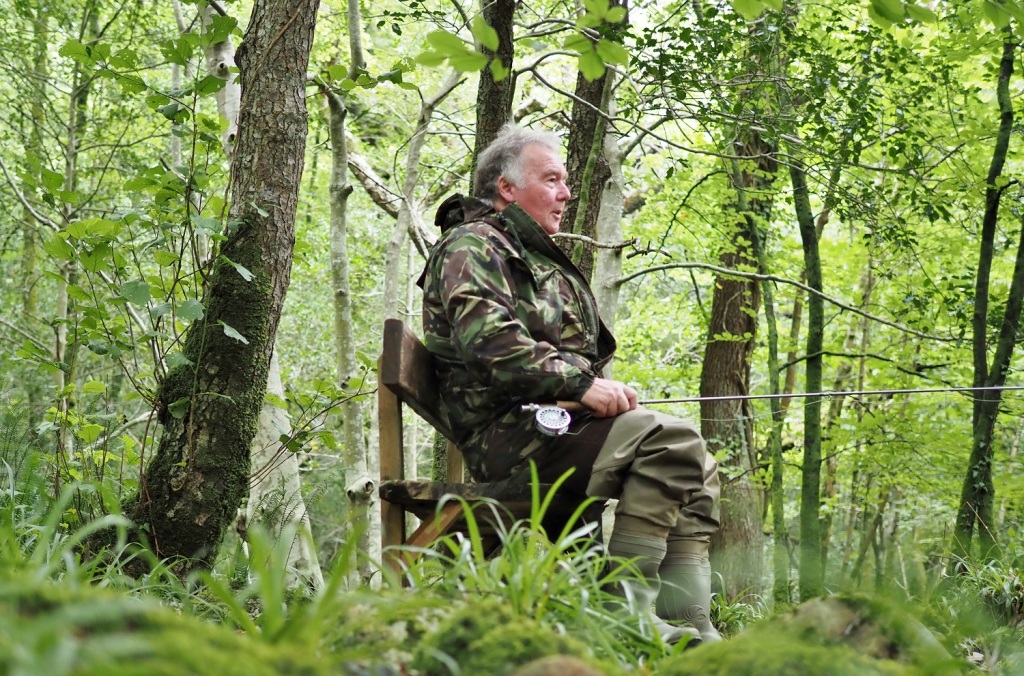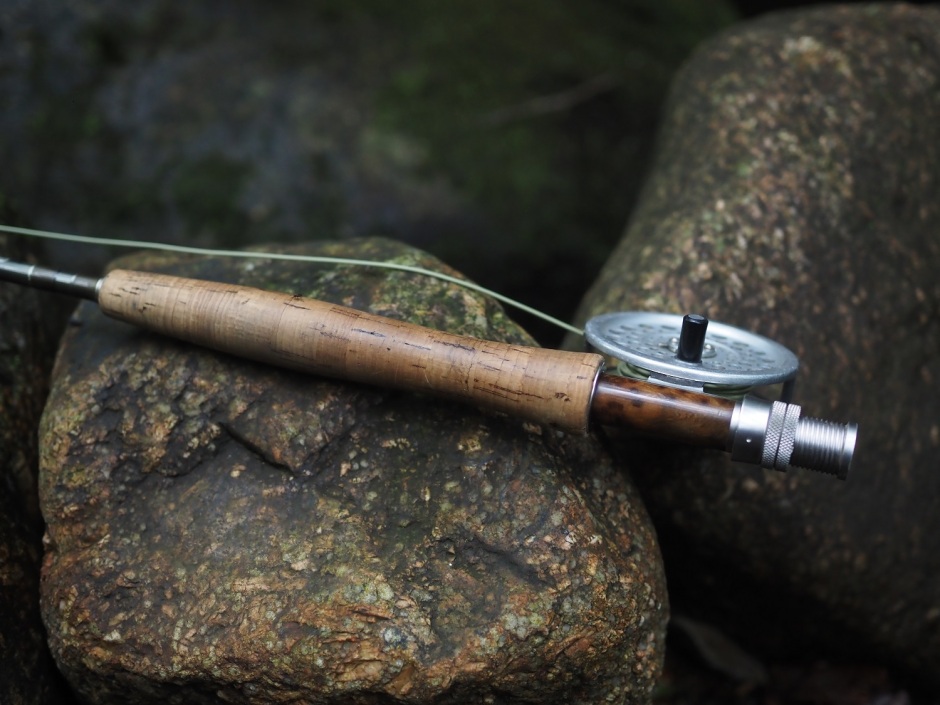Several days of heavy showers had raised the level of the rivers. Dartmoor filtered most of the rain and after a couple of days of road run off, the dirt dropped out to leave clean water. The colour changed from end-of-barrel-murky-bitter to fresh lager. I watched the trout from the bridge over the River Walkham, they had taken up positions behind ledges and rocks, darting out to taste passing debris.
The rain had cleared away the wild swimmers and spaniels. Rock throwing kids had gone back to school and I had a wide choice of undisturbed Beats to fish. The unpredictable weather ruled out long walks into the centre of the moor, it was too dangerous. The rapidly changing light prompted me to choose a stretch of the River Plym in a deep valley where I could spend time with both the camera and the rod.

I started in the bridge pool with an upstream nymph. The usual size 14 Gold Ribbed Hares Ear nymph trundled around beside the cutwater and was taken confidently by an immaculate brownie. A simple approach had been effective, a tapered nylon leader and two knots, to tippet and to fly. No beads, no droppers and no trendy modern rig with furled leader, rings and loops. The soggy fly looked remarkably like Gammarus, the freshwater shrimp.

I felt that the pool held other trout and extended my casts further upstream under the arch of the bridge. A tap on the rod confirmed my thoughts. I changed fly and flicked the Black Pennell into the fast water. It was ignored, the little trout had gone into hiding.

I walked slowly down the Beat, fishing some of the pools with an upstream nymph, occasionally hanging around tree trunks, dabbling the nymph through white water, mainly fishing down and across where access was restricted by the steep rock strewn banks. I found trout in most pools. My long term average was maintained; half the takes converted – half of hooked fish landed.
Big troop carrying helicopters thundered overhead, just above the tree tops. At Bickleigh, just a mile upstream, 42 Commando were loading themselves and their kit onboard HMS Albion moored in Plymouth Sound. The atmosphere in the deep valley was quite spooky. The tree canopy kept the humidity high. The lichen covered branches, the ferns among the granite boulders and the twisted boughs looked like a screen grab from Jurassic Park. The woods were silent, pheasants strutted around like velociraptors and the helicopters provided an apocalyptic sound track.

I rested on the bench in the middle of the Beat. I had spent the majority of the afternoon watching the river and taking photos. It had been a memorable three hours. The next morning, after a night of torrential rain, the River Walkham had risen a foot and the roar of the weir could be heard in my cottage. I had timed my trip perfectly.


